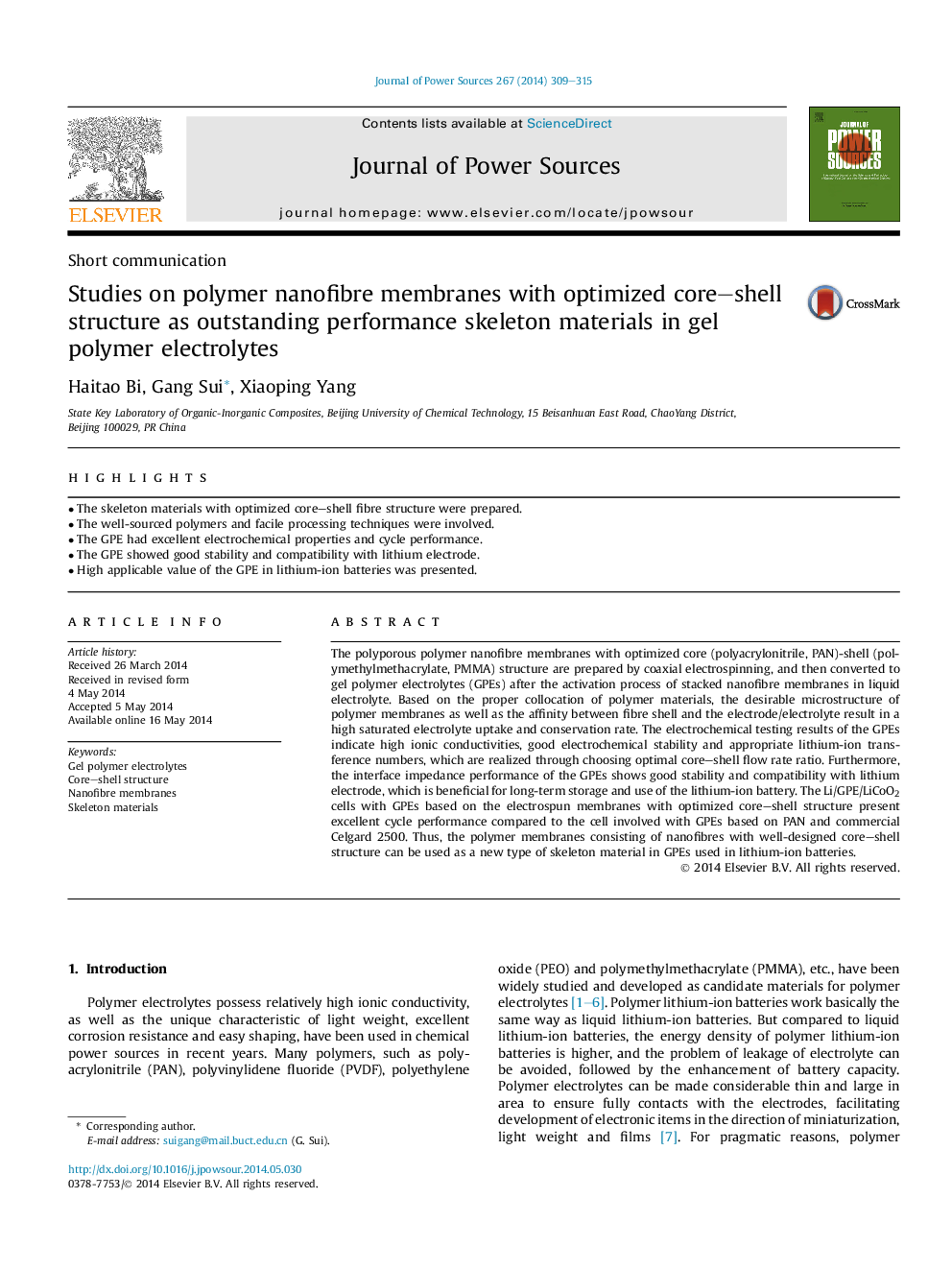| Article ID | Journal | Published Year | Pages | File Type |
|---|---|---|---|---|
| 1286582 | Journal of Power Sources | 2014 | 7 Pages |
•The skeleton materials with optimized core–shell fibre structure were prepared.•The well-sourced polymers and facile processing techniques were involved.•The GPE had excellent electrochemical properties and cycle performance.•The GPE showed good stability and compatibility with lithium electrode.•High applicable value of the GPE in lithium-ion batteries was presented.
The polyporous polymer nanofibre membranes with optimized core (polyacrylonitrile, PAN)-shell (polymethylmethacrylate, PMMA) structure are prepared by coaxial electrospinning, and then converted to gel polymer electrolytes (GPEs) after the activation process of stacked nanofibre membranes in liquid electrolyte. Based on the proper collocation of polymer materials, the desirable microstructure of polymer membranes as well as the affinity between fibre shell and the electrode/electrolyte result in a high saturated electrolyte uptake and conservation rate. The electrochemical testing results of the GPEs indicate high ionic conductivities, good electrochemical stability and appropriate lithium-ion transference numbers, which are realized through choosing optimal core–shell flow rate ratio. Furthermore, the interface impedance performance of the GPEs shows good stability and compatibility with lithium electrode, which is beneficial for long-term storage and use of the lithium-ion battery. The Li/GPE/LiCoO2 cells with GPEs based on the electrospun membranes with optimized core–shell structure present excellent cycle performance compared to the cell involved with GPEs based on PAN and commercial Celgard 2500. Thus, the polymer membranes consisting of nanofibres with well-designed core–shell structure can be used as a new type of skeleton material in GPEs used in lithium-ion batteries.
